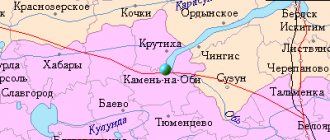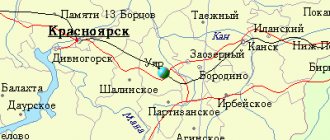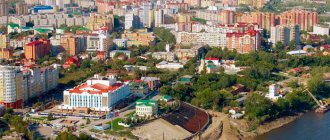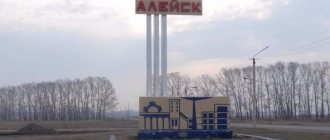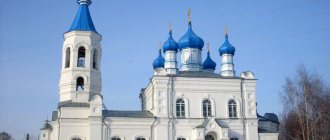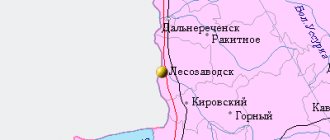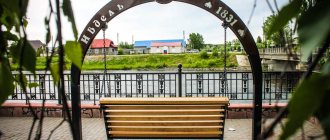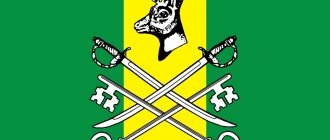Initially, Tobolsk was inhabited by Cossacks and settlers from central Russia and the Urals, which was located in close proximity to Siberia, endowed with untold riches. Russian pioneers, merchants, always striving inland, moved towards the Pacific Ocean, leaving behind settlements that later turned into cities. Tobolsk became the center of development of Siberia. It was founded by the Cossacks under the leadership of Ermak.
Foundation of the city
It is known that it was expensive for Russia to wage war against the Tatar khans on its eastern borders. Endless skirmishes with their detachments had a negative impact on the development of the territory of the Siberian Territory. Then the protection of the northeastern borders was entrusted to the Ural owner of the salt mines, the wealthy merchant Stroganov, and he entered into an agreement to protect the eastern borders with the Volga Cossacks led by Ermak. Thanks to the Cossacks, Siberia began to be explored by pioneers.
Tyumen became the first city of Siberia. The Tyumen fort was founded a year earlier than the Tobolsk one. Thanks to its advantageous position, it was Tobolsk that became the capital of Siberia for many years. The first population of Tobolsk were Russian settlers. Initially it was called the city of Siberia. The official date of its foundation is considered to be the summer of 1587, when the city of Tobolsk was founded 17 kilometers from the Tatar city of Isker on the banks of the Irtysh River, near the mouth of the Tobol.
This place was not chosen by chance. The construction of a settlement at the intersection of two large and navigable rivers was extremely profitable. After all, the only transport links in the taiga were rivers. Here, five years earlier, a battle took place between a Russian detachment of Cossacks and the army of the Tatar Khan Kuchum, a cunning and vile ruler who swore friendship to the Russian Tsar, and himself incited local tribes who traded with Orthodox merchants to attack Russian settlements and detachments.
Literature
- Slovtsov P. Walks around Tobolsk in 1830
, 1834 - A brief historical sketch of the city of Tobolsk
// Tobolsk Diocesan Gazette, 1887, No. 9-10, p. 168-177 - Znamensky M.S. Historical surroundings of the city of Tobolsk
, 1901 - Russia.
Complete geographical description of our Fatherland / Ed. V.P. Semenov-Tien-Shansky. T. 16. Western Siberia, St. Petersburg, 1907, p. 400-403. - Butsinsky P.N., Works in two volumes: T. 1. Settlement of Siberia and the life of its first inhabitants
/ Ed. S.G. Parkhimovich. Comp. Yu.L. Mandrika. - Tyumen, 1999, p. 107 - 143.
Development
The route from Russia to Siberia passed through the city. He developed quickly. Since 1590, it became a city and center for the development of Siberia. Peter I was very interested in it, who appreciated its importance and wanted to give it more representativeness. The population of Tobolsk also grew. Russian goods went through the city along the Yenisei and Tobol deep into Siberia, and in the reverse order furs and gold went to Russia. The city was getting rich. Construction was in full swing. The Tobolsk Kremlin was built, many cathedrals, government buildings, and merchant estates were built. Under the first governor of the region, Prince Gagarin, the Prikaz Chambers and the Gostiny Dvor were built.
Large productions for that time developed, such as a state-owned plant, glass, candle and stationery factories. The Siberian Highway passing through it also played a major role in the development of the city. This made the city the commercial capital of Siberia. Mining enterprises developed. Gold and silver went through the city to Moscow and St. Petersburg for the Russian mint.
Tobolsk became famous in history as a Russian exile. The development of the region also took place at the expense of convicts, which also affected the population of Tobolsk. Under Peter I, Swedish prisoners of war were exiled here.
Used materials
- Encyclopedia article My City
- Tobolsk diocesan address-calendar, published by order of the Tobolsk diocesan authorities for 1895. Tobolsk: Printing house of the Tobolsk Diocesan Brotherhood, p. 34-63
- Statistical information about the Tobolsk province for 1858 / Memorial book for the Tobolsk province for 1860. Tobolsk: In the printing house of the Provincial Board, 1860, p. 117, 132-136, 152-153
- Calendar of the Tobolsk province for 1889. Tobolsk: Publication of the Tobolsk Provincial Printing House, p. 112, tab. A
[1]
[2] Inventory made by bishop's order in 1733. Nedosekov A.K. Anthony I Stakhovsky, Metropolitan of Tobolsk and Siberia
// Tobolsk EV, 1891, No. 17-18, dep. unofficial, p. 375.
Soviet period
The Soviet period brought a second life to Tobolsk, a railway was built into the city, a large petrochemical complex was built, which was declared a Komsomol construction site, which led to an influx of young people. Life is in full swing here again. New schools and kindergartens were built. The population of Tobolsk was 97 thousand people. Three new microdistricts were built in the city: Mendeleevo, Sumkino and Rechport.
Tobolsk
(Tyumen region)
OKATO code:
71410
Founded:
1587
City since:
1590 City of regional subordination
Center:
Tobolsk district
Telephone code (reference phone)
| 3456****** | — |
Deviation from Moscow time, hours:
2
Geographic latitude:
58°12′
Geographic longitude:
68°15′
Altitude above sea level, meters:
90 Sunrise and sunset times of the Sun and Moon in the city of Tobolsk
City today
According to statistics, the largest population of the city was 102 thousand people. This figure refers to 2005. After that he began to decline. This is explained by the outflow of people of retirement age who left for central Russia. The maximum minimum level was observed in 2014, the population then amounted to 98,050 people.
The figure is gradually increasing, which can be explained by the growth of oil and gas industry enterprises. What is the population of Tobolsk in 2021? It amounted to 98,886 people. The majority of residents (54%) are women.
Tobolsk is a city of young people. The average age of the population is 34 years. The share of the working-age population is 65%, people of retirement age - 14%. The population density of Tobolsk cannot be called high - 442 people per square kilometer. By national composition:
- Russians - more than 75%;
- Tatars – 16%;
- Ukrainians – 2.5%;
- others – 6.5%.
The city-forming enterprise is a petrochemical plant. A number of oil and gas industry factories operate in the city. in 2014, the construction of the ZapSibNeftekhim plant began - this is the largest oil project in Russia since 1991.
What kind of city is Tobolsk?
12K 5 min.
Tobolsk is the historical center of the Tyumen region, which celebrated its 430th anniversary this year. The municipality is the most important tourist and industrial center of the region. The only stone Kremlin in Siberia is located here, and one of the largest petrochemical plants is based here. According to the approved concept until 2020, Tobolsk will develop as a cultural and spiritual center.
Tobolsk stands at the confluence of the Tobol River and the Irtysh
Photo: Orlov D.
STORY
Tobolsk was founded in 1587 and was the center of the development of Siberia. Three years later, in 1590, it received city status. According to the official version, the founder of the city was voivode Danila Chulkov. From the end of the 16th to the 18th centuries, Tobolsk was the main military, administrative, political and church center of Siberia, since it was located at the intersection of waterways connecting the northern seas, the Urals and Altai. In the 18th century, the city became the center of the Siberian province, stretching from the Ural Mountains to the Pacific Ocean. Moreover, from the end of the 16th to the beginning of the 18th century, it served as a point of transit trade with China and Bukhara. In the 19th century, the route of the Moscow-Siberian Highway changed, and Tobolsk's trade significance was lost. At the beginning of the 20th century, the center of the province moved to Tyumen.
The situation in Tobolsk improved when they began to develop the oil and gas region in the north of the Tyumen region. A railway was built near the city, along which goods were delivered to Novy Urengoy, Surgut and other settlements. In 1974, construction of a petrochemical complex began in Tobolsk, designed to process oil and gas from the Yamalo-Nenets and Khanty-Mansi Autonomous Okrug.
GEOGRAPHY
Tobolsk is located in the north of the Tyumen region at the confluence of the Tobol River and the Irtysh. The municipality is the administrative center of the Tobolsk region, located 247 km from Tyumen. With the beginning of the development of oil and gas fields in this territory, Tobolsk turned out to be one of the intermediate transport centers on the railway and highway connecting Tyumen and the cities of the Ob region. Also in the Tobolsk region, a number of main oil and gas pipelines run towards European Russia.
POWER
The head of Tobolsk is Vladimir Mazur, who has been working in this position since October 2012. According to the structure of the administration, the mayor of the city has five deputies. The first is responsible for the social sphere. The second oversees the legal committee, municipal procurement and special events departments. The third is the housing and communal services, capital construction, urban planning policy, land relations and forestry committees, the housing committee and the transport department. Fourth - the chairman of the finance committee oversees the finance, economics, investment policy committees and the property management committee. The fifth deputy is the business manager. The representative body of city government and legislative power is the Tobolsk City Duma.
COAT OF ARMS
The modern coat of arms of Tobolsk was approved on May 29, 2007 by deputies of the Tobolsk City Duma. Outwardly, it is similar to the historical symbol of the city, granted by Catherine II on March 17, 1785. On a blue field there is a golden pyramid on a pedestal, and in front of it lie two golden drums. Twisted banners and two halberds emerge from behind the monument. The use of a historical coat of arms emphasizes the continuity of generations in the region. Gold in official symbolism represents wealth, stability and respect. Also, the coat of arms of Tobolsk uses red and blue colors, which convey strength, beauty and spirituality.
BUDGET
Tobolsk's revenues for 2021 amounted to more than 5.28 billion rubles. Expenditures of the city treasury were approved in the amount of 5.27 billion rubles. Tobolsk's budget surplus last year amounted to about 13 million rubles.
According to the latest changes, city treasury revenues this year are projected at 9.7 billion rubles, expenses - about 10 billion rubles. The planned budget deficit will be about 302.7 million rubles. In the first quarter of 2021, Tobolsk's revenues amounted to 802.7 million rubles, which is 8.2% of the annual plan, expenses - 805.5 million rubles. Compared to the same period last year, this figure decreased by 5.8%. The budget deficit of Tobolsk at the end of the first quarter of 2021 amounted to more than 2.7 million rubles.
INDUSTRY
The volume of goods shipped in the first half of 2021 in Tobolsk amounted to 187.1 billion rubles, which is 8.6% more than the same period last year. Manufacturing industries account for about 97.1% of total production. In 2016, the volume of goods shipped and services performed was more than 365.8 billion rubles. In particular, the manufacturing industry accounted for 354 billion rubles.
The largest gas and petrochemical plant is registered in Tobolsk. The Tobolsk Petrochemical Plant became part of Sibur in 1999; in 2013, Sibur launched a polypropylene production complex, Tobolsk-Polymer. Sibur Tobolsk's production facilities include a central gas fractionation unit with a capacity of 8 million tons of liquefied gases per year, the production of monomers for the production of synthetic rubbers - butadiene and isobutylene, as well as the production of methyl tert-butyl ether.
At the moment, another large-scale project is being implemented in Tobolsk - the construction of the ZapSibNeftekhim plant has begun, this is the largest petrochemical project in Russia. The total area of the future complex is 460 hectares. Currently, more than 12.9 thousand construction workers are working on the site. According to the company, the project is 52.9% completed. Completion of construction is scheduled for 2021.
POPULATION
Tobolsk is the second most populous city in the Tyumen region. The population of the urban district of Tobolsk, which includes the administrative center and the village of Sumkino, this year is more than 102.4 thousand people. For the third year in a row, this figure has been growing: if in 2015 the number of city residents approached 101.7 thousand people, then in 2021 this figure reached more than 102 thousand.
The average monthly salary in Tobolsk in the first half of 2021 is about 48.5 thousand rubles, compared to the same period last year, the figure increased by 11.6%. At the moment, 223 unemployed people are registered in the city, the unemployment rate is 0.41% of the economically active population. There are 0.02 people per vacancy.
TOURISM
Over the six months of this year, Tobolsk was visited by more than 124.7 thousand tourists, 866 of whom were foreigners. According to forecasts, by 2020 the flow of tourists in the city will be about 678 thousand people.
There are 25 travel agencies, five of them are domestic tourism operators. The city has 14 museum sites and 50 points selling souvenirs. In Tobolsk there are about 300 historical and cultural monuments, including 16 cathedral, monastery and parish churches. The most significant remains the Tobolsk Kremlin with the first stone church in Siberia - the Sophia-Assumption Cathedral, which was built in 1683 - 1686. Among the federal objects of cultural heritage of Tobolsk are the Prison Castle, the Church of the Archangel Michael, the Church of the Seven Youths of Ephesus, the house of the Governor General, in which Nicholas II lived with his family during exile, and other objects. The oldest drama theater in Siberia, P. P. Ershov, also operates here.
RELIGION
Tobolsk is rightfully considered one of the spiritual centers of Russia. In addition to 16 Orthodox churches, the city has two Muslim mosques and a Catholic church. In the vicinity of Tobolsk there are the Ioanno-Vvedensky Women's Monastery and the Abalaksky Holy Sign Monastery, included in the list of all-Russian holy places, which are places of pilgrimage for Orthodox believers in Russia and abroad. Not far from Tobolsk there is also a sacred place for the Tatars - Iskerskaya Astana, where the first preachers of Islam are buried.
DEVELOPMENT
According to the concept of socio-economic development of Tobolsk, the city's population by 2021 will be about 103.5 thousand people. The volume of goods shipped is about 461 billion rubles. The projected volume of investment in fixed capital is 54.4 billion rubles.
Pride of Tobolsk
Many famous compatriots were born in Tobolsk:
- the great chemist D. Mendeleev;
- writer P. Ershov;
- S. Remezov - chronicler and cartographer of Siberia;
- composer A. Alyabyev - author of the famous "Nightingale";
- artist V. Perov - author of “Girl with Peaches”;
- Yu. Osipov - famous mathematician;
- architect N. Nikitin;
- B. Grabovsky - inventor of television;
- famous artists L. Smirnova, A. Abdulov and many others.
Now Tobolsk is the center of Orthodoxy. There are many temples and monasteries here, as well as a theological seminary. The city is the center of tourism in Siberia.
Religion
In 1620, the Siberian diocese was established with its center in Tobolsk.
The Saints
- St. Simeon (Molyukov) (+ 1699), Metropolitan. Smolensky is a native of the city
- Mch. Feodor Ivanov (+ 1937) - born, labored and was shot in the city
Monasteries
- Sign, icons of the Blessed Virgin Mary (destroyed)
Temples
- Alexander Nevsky, at the prison castle (inactive)
- Alexander Nevsky, at the correctional prison department (inactive)
- Alexander Nevsky, temple-chapel
- Alexander Nevsky, chapel (inactive)
- Apostle Andrew the First-Called (restored)
- Annunciation of the Blessed Virgin Mary (lost)
- Epiphany of the Lord (lost)
- Varvara Iliopolskaya in Savinsky Zaton
- Presentation of the Blessed Virgin Mary into the Temple, on Cape Trinity (lost)
- Presentation of the Most Holy Theotokos into the Temple, at the Diocesan Women's School (inactive)
- All-Merciful Savior (rem.)
- Exaltation of the Holy Cross (restored)
- Ascension of the Lord, Cathedral (abolished)
- Ascension of the Lord (under construction)
- Resurrection of the Lord (restored)
- All Saints, on the top floor of the bishop's house (inactive)
- Joy to all who mourn, icons of the Mother of God, at the provincial hospital (inactive)
- Demetrius of Rostov, at the theological seminary (inactive)
- Ephesian youths, cemetery
- Zechariah and Elizabeth (burnt down)
- Sign, icons of the Mother of God, at convict prison No. 2 (inactive)
- Elijah the Prophet (see Church of the Nativity of the Mother of God)
- Innocent of Irkutsk, at the provincial gymnasium (inactive)
- Kazan Icon of the Mother of God in Sumkino
- Cyril and Methodius, at convict prison No. 1 (inactive)
- Ksenia of Petersburg
- Michael the Archangel
- St. Nicholas the Wonderworker, on Trinity Cape (ed.)
- Nicholas the Wonderworker, at the religious school (inactive)
- Nina Gruzinskaya
- Paraskeva Pyatnitsa (see Sretensky Church)
- Peter and Paul
- Intercession of the Blessed Virgin Mary, winter cathedral
- Transfiguration of the Lord, in the Bishop's Grove (inactive)
- Nativity of the Blessed Virgin Mary (lost)
- Nativity of Christ (restored)
- Sergius of Radonezh, gate, in the Kremlin
- Sophia-Uspensky, summer cathedral
- Descent of the Holy Spirit on the Apostles, Church of the Cross (inactive)
- Savior's Image Not Made by Hands (invalid)
- Presentation of the Lord (invalid)
- Trinity of the Life-Giving, Cathedral (rem.)
Cemeteries
- Zavalnoe
Famous people associated with Tobolsk
People born in Tobolsk
- Abdulov Alexander Gavrilovich - actor
- Alyabyev Alexander Alexandrovich - composer
- Batenkov Gabriel Stepanovich - Decembrist, philosopher
- Votintseva Vera Vladimirovna - bard
- Grabovsky Boris Pavlovich - physicist, inventor of television
- Dmitriev Nikolai Aleksandrovich (scientist) (December 27, 1924, Tobolsk - September 23, 2000, Sarov) - theoretical physicist, one of the main mathematicians and developers of the atomic project in the USSR
- Zenkov Andrey Pavlovich - architect, one of the founders of earthquake-resistant construction
- Kokorinov Alexander Filippovich - architect, first director of the Russian Academy of Arts
- Kartsevsky Sergey Iosifovich - linguist, one of the founders of the Geneva school of linguistics
- Korikova Elena Yurievna - Russian actress and singer
- Labinsky Andrey Markovich - tenor singer, artist of the Imperial Theaters, then the Bolshoi Theater of the USSR.
- Mansvetov Grigory Ivanovich (January 28, 1777) - scholar-theologian, spiritual writer, Chief Priest of the Russian Army and Navy (1827-1832).
- Mendeleev Dmitry Ivanovich - chemist, economist
- Nikitin Nikolai Vasilievich - chief architect of the Ostankino TV tower, the Motherland monument, and the Luzhniki stadium
- Osipov Yuri Sergeevich - mathematician and mechanic, President of the Russian Academy of Sciences (RAN)
- Perov Vasily Grigorievich - artist
- Popov Alexander - Olympic champion in biathlon
- Rasputin Grigory Efimovich - friend of the family of the last Russian Tsar Nicholas II
- Remezov Semyon Ulyanovich - cartographer
- Evgeniy Leonidovich Savin is a Russian football player.
- Smirnova Lidiya Nikolaevna (1915-2007) - theater and film actress, People's Artist of the USSR (1974)
- Makoveev Andrey Aleksandrovich - biathlete
- Chakhkiev Rakhim Ruslanovich - Russian boxer, Olympic champion 2008
- Yakovenko Sergey Stepanovich - rector of the Tobolsk State Pedagogical Institute
People who lived in Tobolsk
- Avvakum, archpriest - a famous church figure, head of the opposition to the reforms of Patriarch Nikon in the 17th century
- Abramov Nikolay Alekseevich - historian
- Annenkov Ivan Aleksandrovich - Decembrist, hero of the novel by A. Dumas “The Fencing Teacher”
- Anthony (Stakhovsky) - Metropolitan of Tobolsk and Siberia, canonized in 1984 as part of the Council of Siberian Saints.
- Akhatov Gabdulkhai Khuramovich - scientist-philologist, Doctor of Philology, professor, founder of a number of scientific linguistic schools, including the modern Tatar dialectological school
- Bantysh-Kamensky Dmitry Nikolaevich - historian, statesman
- Vinogradov Viktor Vladimirovich - academician, first director of the Institute of Linguistics of the USSR Academy of Sciences
- Hermogenes (Georgy Efremovich Dolganev) - bishop of the Russian Orthodox Church of the early 20th century, comrade-in-arms of John of Kronstadt drowned by the Bolsheviks, opponent of Rasputin
- Gorban Nikolai Vasilievich (Russian and Ukrainian historian, writer, political exile to Tobolsk in 1934-1937, compiled a guide to the Tobolsk archive)
- Grabovsky Pavel Arsenievich - Ukrainian poet, revolutionary
- Davydov Dmitry Pavlovich - poet, author of the song “The Glorious Sea - Sacred Baikal”
- Dezhnev Semyon Ivanovich - Russian explorer
- Ershov Pyotr Pavlovich - Russian poet
- Znamensky Mikhail Stepanovich is a Russian writer, memoirist, writer, artist, cartoonist, archaeologist, ethnographer.
- John of Tobolsk (Maksimovich) - Metropolitan of Tobolsk and All Siberia; saint of the Russian Church
- Krasnokutsky Semyon Grigorievich - Decembrist
- Yuri Krizanich - Croatian philosopher, propagandist of the idea of uniting the Slavs into one state
- Kuchelbecker Wilhelm Karlovich - Decembrist, poet, lyceum friend of A. S. Pushkin, prototype of Vladimir Lensky from the novel “Eugene Onegin”
- Lanskaya Nadezhda Mikhailovna - actress of the imperial theaters, opera singer (mezzo-soprano).
- Miller Gerard Friedrich - historian, one of the founders of the “Norman theory”
- Muravyov Alexander Nikolaevich - one of the founders of the Decembrist movement, later governor and member of the Senate
- Nikitin Ivan Nikitich - artist, first Russian portrait painter
- Nicholas II - the last Emperor of Russia
- Oraz-Muhammad - the last Siberian khan, the prototype of Tsar Saltan, the cause of the death of False Dmitry II
- Radishchev Alexander Nikolaevich - famous Russian dissident, writer, poet
- Sirko Ivan Dmitrievich - ataman of the Zaporozhye army
- Soymonov Fedor Ivanovich - associate of Peter I, geographer, member of the Paris Academy of Sciences
- Speransky Mikhail Mikhailovich - famous statesman, systematizer of Russian legislation
- Stefan Znamensky - Orthodox saint
- Surikov Vasily Ivanovich - artist
- Philofey Leshchinsky - metropolitan, outstanding religious figure and educator of the era of Peter I, one of the founders of the Russian theater
- Fonvizin Mikhail Alexandrovich - Decembrist, heir to playwright Denis Fonvizin
- Fonvizina Natalya Dmitrievna - wife of the Decembrist Mikhail Fonvizin, prototype of Tatyana Larina from the novel "Eugene Onegin"
- Khlopova Maria Ivanovna - winner of the first bride competition in the history of Russia, the bride of Tsar Mikhail Fedorovich, who suffered from intrigues
